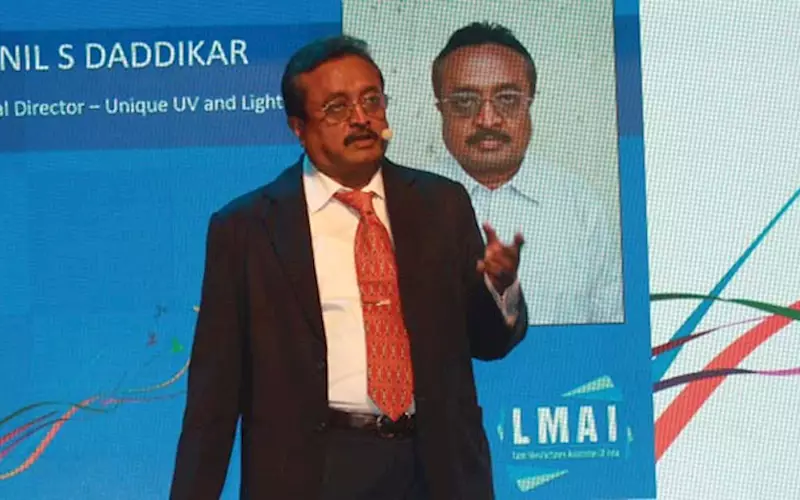While discussions on the technology rage on, it’s important to consider the most prescient question, what are the factors fuelling the demand for UV?
According to Sunil S Daddikar, director, Unique UV and Light, the growth of UV curing applications in any field depends on three major factors. One, UV curing system manufacturers; two, UV-curable chemicals formulators (inks/ coatings/adhesives, etc) and three, end-users.
When it comes to LED UV, it emits mono-chromatic wavelength. Therefore, it needs specially formulated chemicals. Unless this LED UV-curable ink/coating manufacturing industry is ready, the growth will depend on expensive imported ink/coatings.
However, Daddikar believes that India will be ready with local LED UV-curable ink/ coating in the next two to three years, as many Indian ink/coating manufacturers have already started working towards it.
“To begin with, the LED UV growth will follow the global trend in UV inkjet printing; the most preferred application for LED UV curing. Earlier, the preferred application for UV used to be in silk screen printing and such low-speed applications. Thanks to high-power LED UV systems developed in last few years, it is getting popular in flexographic printing and high speed offset printing as well,” Daddikar says.
Daddikar adds that initially, LED UV application will be limited to printing on thermally sensitive substrates or specialised applications due to higher capital cost of the system. “However, in due course, this will also be economical and widely acceptable. Until then, we may have to wait and work in specialised area for specific applications,” he adds.
LED from Phoseon
Unique UV and Light represents USA-based Phoseon Technology, which in 2002 pioneered the use of LED technology for UV curing applications.
“We have scalable LED UV modules in air cooled as well as high power modules in water-cooled versions. It covers a wide range of sizes and power capacities as compared to other manufacturers,” says Daddikar.
Best practices
Daddikar suggests that while using LED UV, printers should take the required precautions.
For air-cooled units, he suggests that the system should be protected from dust. The air filters should be cleaned periodically and the working of in-built cooling fans should be checked properly. Also, the quartz window on the front face of the module should be kept clean, especially of ink and dust.
For water-cooled units Daddikar also suggests that there should be a continuous flow of cooling water. Also, it’s a must to check and monitor adequate temperate of the chilled water. It must not be too low. It may cause condensation of moisture inside the LED UV module causing permanent damage.











 See All
See All